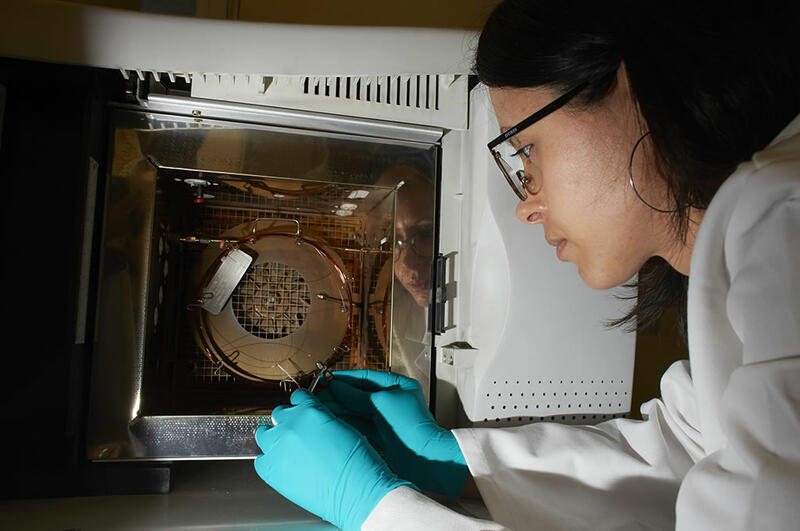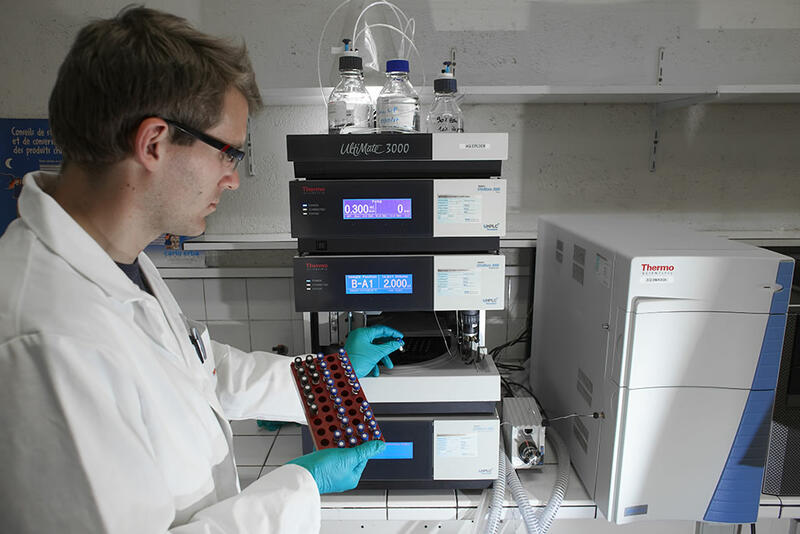
Studies of overall and specific migrations
Coated and recycled papers, boards and composites
- Checking the inertia of a paper/board material and the overall migration limits for food contact
- Expert appraisals and advice on the different regulations (France, Germany, USA, etc.)
- Analysis of restricted substances
General informations
Overall and specific migrations are studied as part of the process of assessing the composition of a material in order to establish its admissibility and its suitability for food contact.
The CTP’s Chemical Analysis Laboratory has the equipment required to perform, in-house, many of the analyses required by the most common regulatory reference documents, such as the 21 CFR §176 drawn up by the FDA in the United States, or those referring to the European Framework Regulation (EC) 1935 2004 (non-exhaustive list):
- French Information Note (Fiche MCDA) n°4 published by the DGCCRF – France (January 2019)
- Recommendations XXXVI, XXXVI/1, XXXVI/2 and XXXVI/3 issued by the BfR – Germany (June 2019)
- Decreto Ministeriale 21/03/73 – Italy (2006).
Technical Data and Achievements
Overall migrations
The overall inertia limits required depend on the type of paper/board packaging studied and the type of contact (dry, aqueous or fatty).
Our laboratories can carry out migrations in different conditions in order to adapt to your paper/board material and meet your requirements:
- Migration by IMMERSION according to NF EN 1186-3 (aqueous food simulant), NF EN 1186-14 §3 and XP CEN/TS 14234 (fatty food simulant)
- Migration by CELL (evaluation of overall migration from a specific face of the paper/board material) according to NF EN 1186-5 (aqueous food simulant) and NF EN 1186-14 §4 (fatty food simulant)
- Migration by FILLING according to NF EN 1186-9 (aqueous food simulant) and NF EN 1886-14 §6 (fatty food simulant)
- Migration at HIGH TEMPERATURES according to NF EN 1186-13 Method B (MPPO)
- FDA migration according to 21 CFR §176.170
- Gas phase overall migration according to ONORM A-1123.
Specific migrations and fastness
Specific migrations are conducted in a variety of time and temperature conditions depending on how your paper/board material is used and on the regulatory reference document selected (French Information Note : Fiche "MCDA n°4 from the DGCCRF, Recommendations XXXVI from the BfR", 21 CFR §176 from the FDA).
These migrations are conducted according to the following standards:
- NF EN 13130-1 migrations by cell or by immersion with aqueous or fatty food simulants
- NF EN 14338 migration using MPPO (fatty contact simulator)
- NF EN 15519 migration by immersion for fatty contacts.
On completion of these migrations, state-of-the-art analytical equipment (GC-MS and LC-MS) can be used to analyse a number of restricted substances (non-exhaustive list):
- Phtalates: BBP (CAS no. 85-68-7), DEHP (CAS no. 117-81-7), DIBP (CAS no. 84-69-5), DBP (CAS no. 84-74-2), DINP (CAS no. 28553-12-0/65515-48-0), DIDP (CAS no. 26761-40-0/68515-49-1)
- Ink cross-linking agents and photoinitiators: Benzophenone (CAS no. 119-61-1), 4-MBP (CAS no. 134-84-9), Hydroxybenzophenone (CAS no. 137-42-4), Ethylanthraquinone (CAS no. 64-51-5), AGDAB (CAS no. 21245-03-3), EDAB (CAS no. 10287-53-3), ITX (CAS no. 5495-84-1)
- Primary Aromatic Amines (PAA)
- Polycyclic aromatic hydrocarbons (PAH): Benzo[3,4]pyrene (CAS no. 50-32-8), Benzo(b)fluoranthene (CAS no. 205-99-2), Benzo(a)anthracene (CAS no. 56-55-3), Chrysene (CAS no. 218-01-9)
- Mineral oil hydrocarbons (MOSH/MOAH)
- Michler’s ketone (CAS no. 90-94-8) and DEAB (CAS no. 90-93-7)
- DIPNs
- Anthraquinone (CAS no. 84-65-1)
- Biocides: Bronopol (CAS no. 52-51-7), CMIT (CAS no. 26172-55-4), MIT (CAS no. 2682-20-4), BIT (CAS no. 2634-33-5).
 |
 |
|
| Analysis using gas chromatography–mass spectrometry | Analysis using liquid chromatography–mass spectrometry (LC-MS) |